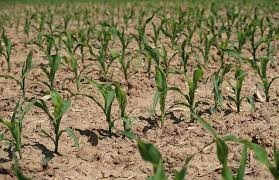Strong heat in Ukraine and the Russian Federation will negatively affect the development of crops and support prices

Next week, heat over 35 o C will prevail in Ukraine and the south-west of the Russian Federation, which will negatively affect the development of crops.
During the next 8 days, temperatures in Ukraine will reach 35-42 o C, it will be especially hot in the south and east. The eastern wind will be moderate, but storm gusts up to 15-20 m/s are possible in the Crimea and the Azov region. Significant precipitation is not expected, but minor rains are possible in Volyn. A powerful anticyclone is blocking the flow of Atlantic moisture to Ukraine, the Hydrometeorological Center reports.
Temperatures will drop no earlier than July 20, but there will be no precipitation for a long time, which will have a very negative effect on the sowing of spring crops, especially soybeans, corn and sugar beets.
Hot weather is also forecast in the south-west of the Russian Federation, but at the end of next week there will be scattered rains and thunderstorms, which will reduce temperatures and stress for crops.
In southeastern Europe, dry and hot weather will intensify drought conditions on spring crops, which will reduce yield potential. At the same time, excessive rains are still continuing in the north-west of the EU, which are delaying the wheat harvest and worsening its quality. The lack of heat delays the development of crops of spring crops, so analysts reduce forecasts for the harvest of soybeans, sunflowers and corn.
In the main agricultural regions of the USA, periodic showers and thunderstorms will continue until the weekend, and next week temperatures will exceed 30-35 o C. However, in a few days, a new wave of precipitation will reduce the heat. Soybean and corn crops remain in good condition, and wheat yields are higher than last year.
Dry and warm weather has finally settled in across Canada's prairies after prolonged rains and cold temperatures, helping canola and spring wheat crops grow, among other crops. Another wave of rain is expected next week, which will bring temperatures down to normal and speed up crop development.
Heavy downpours will continue in southern Brazil this week and next week, delaying the harvesting of second-crop maize, particularly in Rio Grande do Sul state, which is recovering from flooding. Sowing and development of wheat is very slow, so analysts are reducing crop forecasts. Second-harvest corn is most actively harvested in the central regions, where dry weather persists, but experts slightly raised the forecast for corn production in the country.
Dry and cold weather persists in Argentina , helping to complete the corn harvest, but reducing moisture reserves in winter wheat crops. Such conditions will last another 1-2 weeks and will have a negative impact on crops.
Heavy rain continues in eastern and western Australia , replenishing moisture reserves in winter wheat, barley and canola crops. In general, soil moisture and crop conditions are satisfactory, but additional rainfall will be needed in the coming months.


